Wonderful introduction:
Optimism is the line of egrets that are straight up to the blue sky, optimism is the ten thousand white sails beside the sunken boat, optimism is the lush grass that blows with the wind on the head of the parrot island, optimism is the falling red spots that turn into spring mud to protect the flowers.
Hello everyone, today Avatrade Aihua Foreign Exchange will bring you "[Aihua Foreign Exchange Market Review]: Eurozone bond yields rise, and short-term trend analysis of spot gold, silver, crude oil and foreign exchange on July 7". Hope it will be helpful to you! The original content is as follows:
Global Market Review
1. European and American market trends
The three major U.S. stock index futures fell, Dow futures fell 0.07%, S&P 500 futures fell 0.34%, and Nasdaq futures fell 0.47%. The German DAX index rose 0.68%, the UK FTSE 100 index rose 0.15%, the French CAC40 index rose 0.19%, and the European Stoke 50 index rose 0.53%.
2. Interpretation of market news
European bond yields rose, the market focused on US tariff trends
⑴On July 7, eurozone bond yields rose, and the market continued to pay attention to the progress of US tariff policies. Although the United States delays the July 9 tariff deadline, the specific changes are still unclear. ⑵ German 10-year Treasury bond yield rose 2 basis points to 2.583%, basically consistent with the trend of the US 10-year Treasury bond yield, which was latest at 4.3556%. ⑶Jefferies Europe chief financial economist Mohit Kumar said the market is waiting for clear details of Trump's tariff policy, especially which countries may face higher tariffs. ⑷ Trump said that the United States will notify other countries of new tariff rates on July 9, and the new tariffs will take effect on August 1. ⑸Kumar believes that Europe may not be included in the new tariff list, but Japan may be included. ⑹ Regardless of the results, the market has been prepared for the intensification of volatility this week, waiting for clearer details before the original deadline on July 9. ⑺Germany 2-year government bond yield rose 1 basis point to 1.82%, approaching a three-week low. ⑻ Italy's 10-year government bond yield rose by 2.4 basis points to 3.495%, the interest rate spread with German government bonds is 90.4 basis points. ⑼UK 10-year Treasury yield fell 1.3 basis points to 4.54%, although yields remained high after a sharp sell-off in Britain last Wednesday. ⑽Industrial production in Germany exceeded expectations in May due to the push from the automotive and energy industries. ⑾Eurozone investor sentiment rose to its highest level in more than three years in July, and the economic recovery is expanding. ⑿The market expects that the probability of keeping interest rates unchanged at the ECB meeting on July 23 is 86%, and the possibility of a 25 basis point cut is less likely. ⒀Kumar said that the ECB is in an "excellent position", interest rates are at a neutral level, inflation is close to 2%, and economic growth is not strong, but it is far from the recession level, and the central bank can "see it."
Indian farmers warn that the government's trade agreement should not sacrifice the future of agriculture
The Indian government is stepping up negotiations with the Trump administration to avoid being imposed with high tariffs up to 26%. However, against the backdrop of a highly sensitive issue in India's domestic agricultural issues, the Indian government has taken a cautious stance. India's www.avaforexcn.commerce Minister Goyal said the negotiations always start with national interests and stressed that India will not be bound by any timetable. At the same time, India has also strengthened its tough stance in the negotiations, threatening to impose retaliatory tariffs on some U.S. goods. But the political pressure in India cannot be ignored. Opposition parties and peasant organizations warn the government not to make too much concessions to the United States. They are worried that opening up agricultural markets in order to reach an agreement, especially accepting imports of genetically modified crops, will have an impact on their own agriculture and farmers' livelihoods. Avik Saha, a member of the Indian migrant trade union Samyukt Kisan Morcha, pointed out that genetically modified crops will harm the interests of farmers who are already in economic difficulties.
The Brazilian Central Bank survey shows economists' forecasts for economic indicators
⑴ On July 7, the Brazilian Central Bank survey showed that economists expect Brazil's annual IPCA inflation index to reach 5.18% in 2025, lower than the previously estimated 5.20%. ⑵The IPCA inflation index is expected to be 4.50% in 2026, which is the same as the previous forecast. ⑶ By the end of 2025, Brazil's benchmark interest rate (Selic) is expected to be 15.00%, consistent with previous forecasts. ⑷ By the end of 2026, Selic's interest rate is expected to be 12.50%, the same as the previous forecast. ⑸ Brazil's GDP is expected to grow by 2.23% in 2025, higher than the previous estimate of 2.21%. ⑹GDP is expected to grow by 1.86% in 2026, lower than the previous estimate of 1.87%. ⑺At the end of 2025, the Brazilian real exchange rate against the US dollar is expected to be 5.70, the same as the previous forecast. ⑻At the end of 2026, the real exchange rate against the US dollar is expected to be 5.75, higher than the previous estimate of 5.79.
Asian high-sulfur fuel oil profit margin fell to three-month low
⑴On July 7, the refining profit margin of Asia's high-sulfur fuel oil (HSFO) approached a three-month low as the recent selling wave continues. ⑵ According to LSEGData shows that the near-month cracking spread of No. 380 fuel oil is close to $2 per barrel www.avaforexcn.compared to crude oil futures. ⑶ The spot price difference is stable below the goods quotation, while the spot market structure is still in a premium state. ⑷ At the same time, the price of ultra-low sulfur fuel oil (VLSFO) remains basically stable, and the cracking spread is at a premium of US$11 per barrel www.avaforexcn.compared with crude oil futures, the same as the previous trading day. ⑸ During the bidding, Indonesian Petroleum Corporation Pertamina provides residue fuel for August loading. ⑹The bankrupt Lindsay refinery in the UK has obtained some crude oil supply to avoid an immediate closure, but sources say the agreement with supplier Glencore is limited. ⑺On Monday, crude oil prices narrowed their declines due to tight spot markets, offsetting concerns that OPEC+'s production increase exceeded expectations in August and about the impact of U.S. tariffs could have on economic growth and oil demand. ⑻Saudi Arabia raised crude oil prices to Asian and European buyers more than $1 per barrel on August on Sunday as domestic crude oil demand is expected to increase, reduce exports and increase imports from China. ⑼ Fuel oil imports from U.S. Gulf Coast refining centers hit a record low in June as global supply tightening prompted refineries to process more heavy, sulfur-containing crude oil. ⑽ Greek tanker operator TMSTankers said that last week Greek tanker Vilamoura was hit by an external explosive device while sailing near the coast of Libya, causing damage to the hull.
U.S. trade uncertainty drags down prices of copper and other base metals
⑴ On July 7, copper and other base metals prices fell as U.S. President Trump said the United States is about to close several trade agreements this week. ⑵Trump said that the United States will notify other countries of new tariff rates on July 9, and the new tariffs will take effect on August 1. ⑶Trump also threatens to impose an additional 10% tariff on some countries. ⑷ The price of the three-month copper contract on the London Metal Exchange (LME) fell 0.7% to $9,798 per ton, technically supported by the 21-day moving average of $9,765.8. ⑸Dan Smith, managing director of www.avaforexcn.commodity market analysis, said market participants are taking profits due to the threat of additional tariffs, after copper prices rose sharply in the previous month due to optimism. ⑹Copper prices hit a three-month high last week, reaching US$10,020.50 per ton. ⑺ As the U.S. investigation into copper import tariffs is still ongoing, www.avaforexcn.comEX copper futures’ premium to the LME benchmark remains high, with www.avaforexcn.comEX copper inventories rising 120% since mid-February to reach a seven-year high. ⑻Smith said: "Currently, copper is 'trapped' in the United States, resulting in a certain squeeze in the market, and many inventory is in the wrong position and is difficult to obtain." ⑼The copper inventory in LME registered warehouses is currently 97,400 tons, which has risen slightly since early July, but has still declined by 64% since mid-February.
The Malaysian Central Bank expects to cut interest rates for the first time in five years to heat up
⑴ On July 7, a Reuters survey showed that the Malaysian Central Bank is expected to cut interest rates for the first time on July 9, the first in five years, www.avaforexcn.compared with the previous majorityEconomists expect interest rate cuts in the first half of 2026 have changed significantly www.avaforexcn.compared with the expectations. ⑵17 of the 31 economists expect the Malaysian central bank to lower overnight policy interest rates by 25 basis points to 2.75% on Wednesday, while the remaining 14 expect rates to remain unchanged. ⑶ This expected change is due to recent weak economic data, with economic growth slowing to 4.4% in the first quarter, inflation fell to a four-year low of 1.2% in June, and the central bank's May statement also mentioned that the downward risks of the economic outlook are increasing. ⑷Brian Tan, head of Southeast Asian economic research at Barclays Bank, said that although interest rate cuts are expected, there is a risk of delaying until September or November, and the central bank may be more inclined to lower interest rates when psychologically boosting economic confidence rather than relaxing policies in advance. ⑸ Some economists expect the central bank may wait several months to obtain more clear information on the impact of the sales and service tax (SST) hike that will take effect on the domestic economy. ⑹CGS International Securities chief economist Ahmad Nazmi Idrus said the central bank may need to see the impact of the sales and service tax hike and more evidence of economic weakness before deciding to cut interest rates. ⑺Although the median forecast shows that interest rates will remain at 2.75% by at least the end of 2026, economists have no clear consensus on interest rate trends, with interest rate forecasts at the end of next year ranging from 2.25% to 3.00%. ⑻ Malaysia's deteriorating export performance may also force the central bank to cut interest rates. ⑼ Southeast Asian countries will be particularly vulnerable to the US Trump tariff remarks, and it is expected that the United States will issue tariff proposals to countries to "accept or leave" starting this Monday. ⑽Moody's analytical economist Sunny Kim Nguyen said external demand data show that Malaysia's slowdown in economic growth has affected actual production from an emotional level, and U.S. tariffs pose a direct threat to Malaysia's export of electronic products and machinery. ⑾ She added that these developments should meet the additional support tests that the central bank highlighted in its May statement. ⑿Malaysia's economy is expected to grow 4.2% this year, slightly below the central bank's forecast range of 4.5% to 5.5%, and is expected to grow 4.3% in 2026. Inflation is expected to average 1.9% this year and will rise to 2.3% next year.
U.S. Gulf Coast fuel oil imports hit record low
⑴On July 7, fuel oil imports from the U.S. Gulf Coast refining center hit a record low in June, as global supply tightening prompted refineries to process more heavy and sulfur-containing crude oil. ⑵ After processing heavy and sulfur-containing crude oil, more heavy residues will be generated, which can be converted into high-value-added products such as gasoline or diesel in the secondary processing unit. ⑶In June, the import volume of fuel oil along the Gulf Coast fell to 213,000 barrels per day, down from 233,000 barrels per day in May and a significant decrease from 430,000 barrels per day in June 2024. ⑷ Gulf Coast refineries account for more than 55% of the total refining capacity of the United States. ⑸Mexico crude oil imports fell to their lowest level since April 2020, at only 22,000 barrels/daily, a sharp drop from 71,000 barrels per day in May. ⑹ Global high-sulfur fuel oil supply is tight due to surge in air conditioning demand in the Middle East in summer, while US sanctions on Russian oil have further tightened supply. ⑺The price of high-sulfur fuel oil has increased, making it less economical as a raw material for refineries than crude oil. In May, the premium of high-sulfur fuel oil to Mexico's flagship Maya Heavy Crude Oil averaged $4.20 per barrel, the highest monthly average premium since October. ⑻ Refineries therefore reduce the processing volume of high-sulfur fuel oil and instead process heavy crude oil more. ⑼In the long run, US refineries are reducing imported residue raw materials, relying more on domestic crude oil processing, adjusting the types of crude oil processing, increasing the import of heavy and medium crude oil, and optimizing the configuration of refineries. ⑽ U.S. Energy Information Administration data shows that fuel oil inventories on the Gulf Coast fell to their lowest level since March 1996, at 10.63 million barrels. ⑾As the United States bans imports of Russian-Ukrainian oil, the imports of fuel oil along the Gulf Coast of Russia and Ukraine continue to decline.
The low water level of the Rhine in Germany affects shipping
⑴ On July 7, despite the rainfall over the weekend, the water level of the Rhine in Germany was still low and shipping was hindered. ⑵ Due to drought and heat waves in Western Europe, the water level of the Rhine failed to rise significantly, affecting shipping south of Duisburg and Cologne, including this key point in Kaubu. ⑶ Ships can usually only sail half-load, and shallow water causes shipping www.avaforexcn.companies to charge surcharges for freight to www.avaforexcn.compensate for the situation where they are not fully loaded, increasing the cost of the shipper. ⑷ Traders said that cargo transportation had to be www.avaforexcn.completed through sharing of multiple ships. ⑸ More rainfall is expected in the www.avaforexcn.coming days, which may cause water levels to rise. ⑹The Rhine is an important transportation channel for www.avaforexcn.commodities such as grain, minerals, ores, coal and petroleum products (including heating oil). In the summer of 2022, German www.avaforexcn.companies faced supply bottlenecks and production problems due to abnormally low water levels in the Rhine due to drought and heat waves.
The benchmark price of Middle East crude oil is stable, Saudi Arabia raises the price of Asian market
⑴On July 7, the benchmark price of Middle East crude oil is stable, after Saudi Arabia raised the price of crude oil to the Asian market in August to a four-month high. ⑵ Saudi national energy www.avaforexcn.company Saudi Aramco raised its flagship Arab light crude oil official price to Asia in August to $2.20 higher than the average price of Oman/Dubai, up $1 from July, and up 50 to 80 cents per barrel than market expectations. ⑶ In Singapore cash trading, Dubai crude oil premium to swaps rose 4 cents to $3.16 a barrel. ⑷Some trading prices on the day showed that the trading price of China Petroleum and Vitol was US$69.40 per barrel, while the trading price of Hengli Petrochemical and Gunvor was US$69.45 per barrel. ⑸ Currently, GME Oman crude oil price is US$69.71 per barrel, down 7 cents from the previous trading day. ⑹In terms of news, OPEC+ plans to approve another round of large-scale production increase in September to www.avaforexcn.complete the gradual withdrawal of voluntary production cuts in eight countries and allow the UAE to increase production to meet new quotas. ⑺Discounts for delivery of Russian flagship crude Ural crude to Indian ports in August narrowed to its lowest level since 2022 as demand is strong and spot supply is reduced. ⑻ Canadian Prime Minister Mark Carney said a new oil pipeline leading to the coast of British Columbia is likely to be included in the list of projects that the Canadian government considers of national importance. ⑼ Shell expects its quarterly earnings to be hit by weak trading in the integrated gas sector and losses in chemical and product operations, and the www.avaforexcn.company will release its second-quarter earnings on July 31.
3. Trends of major currency pairs in the New York Stock Exchange before the market
Euro/USD: As of 20:23 Beijing time, the euro/USD fell and is now at 1.1724, a drop of 0.46%. Before the New York Stock Exchange, after reaching overbought levels, the (Euro-USD) price fell at the recent intraday level in the case of negative signals on (RSI) to break through the 1.1745 support and exceed the EMA50 support, increasing negative pressure and strengthening the possibility of more correctional declines.
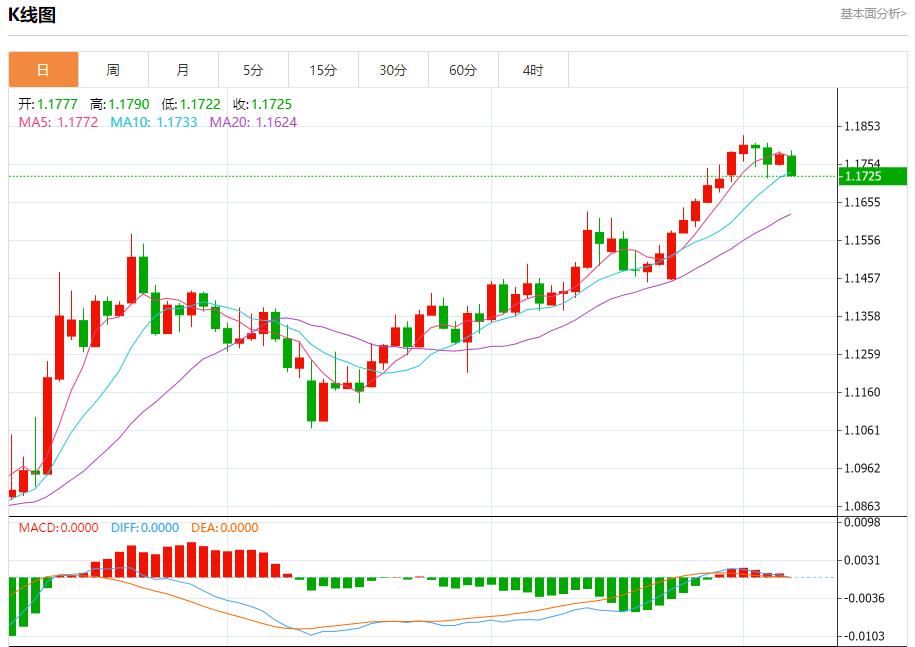
GBP/USD: As of 20:23 Beijing time, GBP/USD fell and is now at 1.3619, a drop of 0.19%. Before the New York Stock Exchange, the price of (GBPUSDwww.avaforexcn.com) fell in the last intraday trading, which was dominated by short-term bearish corrections, which reduced positive momentum and limited recovery attempts. This decline occurred when trading below EMA50 continues, strengthening the current negative profile on a short-term basis.
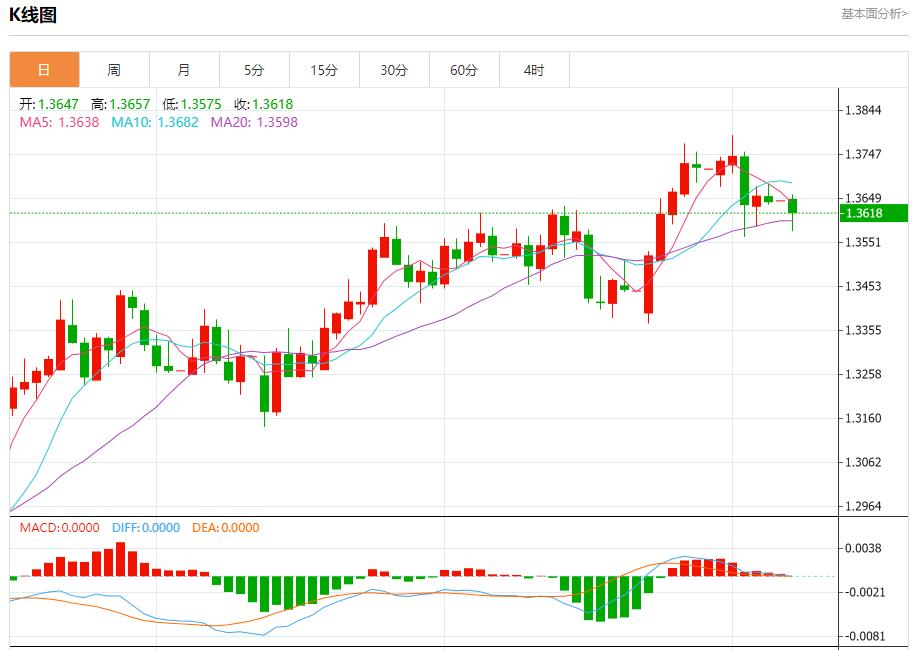
Spot gold: As of 20:23 Beijing time, spot gold fell and is now at 3304.43, a drop of 1.00%. Before the New York Stock Exchange, the price of (gold) closed at a low level in the last intraday trading because it traded above the EMA50 from persistent negative pressure and under the dominance of the short-term bearish trend, its trading was traded along the bias line, except for the continuation of negative signals from (RSI), reaching oversold levels, viewing it as a weak signal of a decrease in negative momentum.
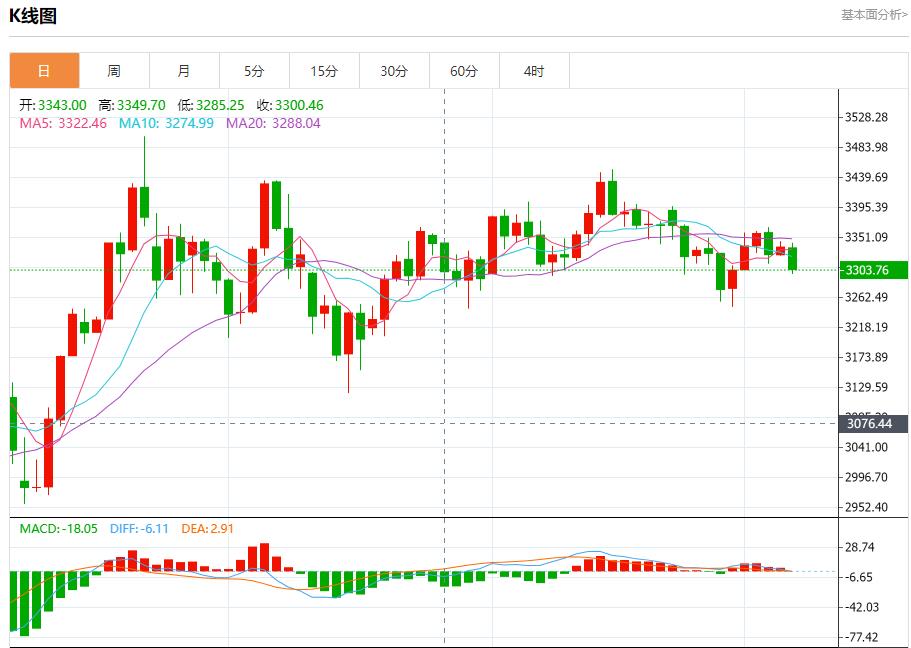
Spot silver: As of 20:23 Beijing time, spot silver fell, now at 36.256, a drop of 1.82%. Before the New York Stock Exchange, the price of (silver) fell in the last intraday trading, and in the event of a negative signal (RSI), try to obtain the possibleThe positive momentum that helped it recover and rise again, relying on the support of the EMA50, provides some positive momentum that helped it stop the morning losses, trading next to the main bullish trend and its secondary deviation lines based on the sorting.
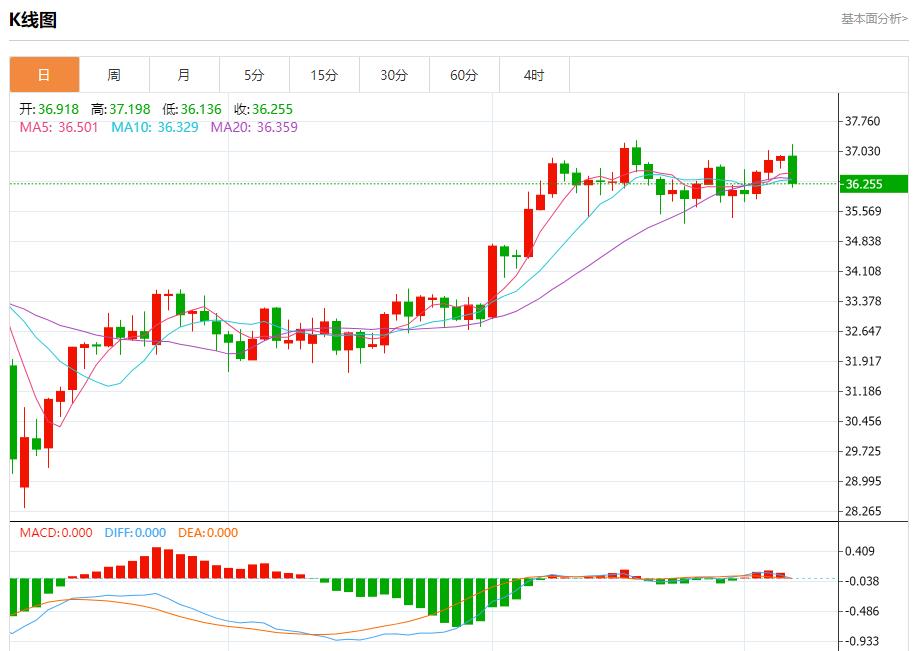
Crude oil market: As of 20:23 Beijing time, U.S. oil rose, now at 67.050, an increase of 0.07%. Before the New York Stock Exchange, the (crude oil) price recovered quickly from the losses at the opening of the early trading session after relying on EMA50 support, providing positive impetus to help it rebound to clear all early losses and once it reached oversold levels, stabilizing again above the $66.00 resistance level, with positive signals starting to appear on the RSI.
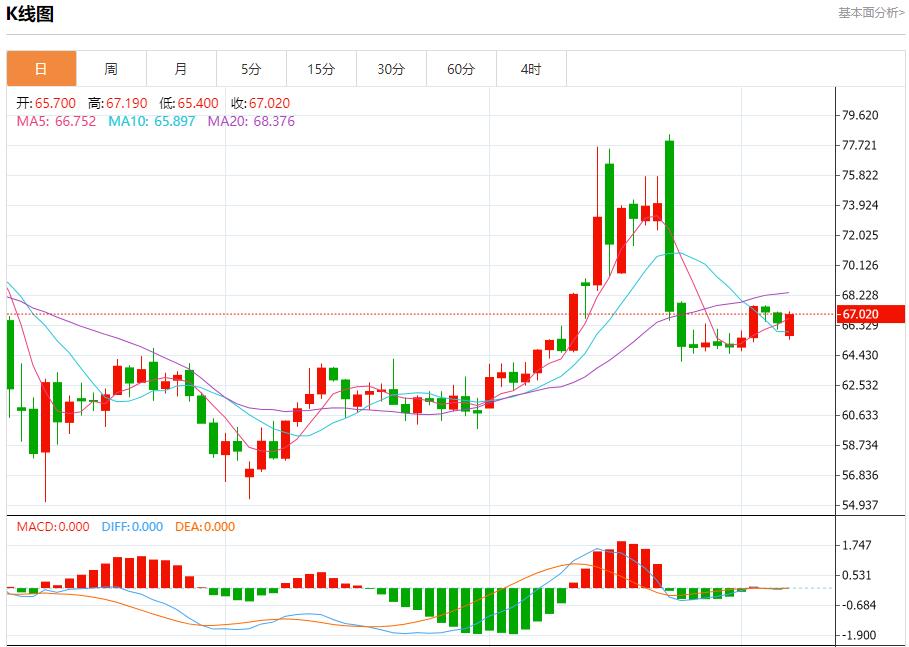
4. Institutional View
Barclays: Upgrade the Codyvaux target price to US$75, maintain the equal weight rating
⑴ On July 7, 2025, Barclays raised the Codyvaux target price from US$70 to US$75, and maintained the equal weight rating. ⑵ According to analysts surveyed by FactSet, Codyvar's average rating is overweight, with an average target price of $75.81.
Goldman Sachs: OPEC+ member countries are expected to increase oil production by 550,000 barrels per day in September
Goldman Sachs said that it is expected that the eight OPEC+ member countries will increase oil production quota by 550,000 barrels per day in September, thus www.avaforexcn.completing the www.avaforexcn.complete cancellation of voluntary production cuts of 2.2 million barrels per day. They hope to restore idle production capacity to normal as global oil demand shows resilience. OPEC+ oil-producing countries agreed on Saturday to increase production by 548,000 barrels per day in August, further accelerating the pace of production increase. This is the first meeting since the surge in oil prices has fallen after Israel and the United States attacked Iran. Goldman Sachs said: "The decision to accelerate the pace of production growth on Saturday strengthens our confidence. The transition to a longer-term equilibrium strategy that we pointed out since last summer is continuing, with the focus on normalizing idle capacity and market share, supporting internal cohesion, and strategically restricting U.S. shale oil supply." Goldman Sachs expects crude oil production in the eight OPEC+ member countries to increase by 1.67 million barrels per day from March to September to 33.2 million barrels per day, of which Saudi Arabia accounts for more than 60% of the scale of production increase. Goldman Sachs maintains Brent crude oil price expectations at $59 per barrel in the fourth quarter of 2025, and maintains Brent crude oil price expectations at $56 per barrel in 2026, citing factors such as lower supply than expected (especially Russia) and reduced idle production capacity. Goldman Sachs also highlighted the upward risks of oil demand, and is expected to consume global oil in 2025 driven by strong oil demand in China, resilience in global economic activities and further depreciation of the US dollar.Volume will increase by 600,000 barrels per day and 1 million barrels per day in 2026. Although Goldman Sachs believes that the 2025 price forecast faces a balanced risk, it believes that there is a downside risk in 2026, which is due to the possibility of OPEC+ to lift the second round of production cuts of 1.65 million barrels per day after the epidemic, and the possibility of a U.S. recession is rising (Goldman Sachs analysts predict this possibility is 30%).
The above content is all about "[Ihua Foreign Exchange Market Review]: Eurozone bond yields rise, analysis of short-term trends of spot gold, silver, crude oil and foreign exchange on July 7". It was carefully www.avaforexcn.compiled and edited by the Avatrade Foreign Exchange editor. I hope it will be helpful to your trading! Thanks for the support!
Due to the author's limited ability and time constraints, some content in the article still needs to be discussed and studied in depth. Therefore, in the future, the author will conduct extended research and discussion on the following issues:















